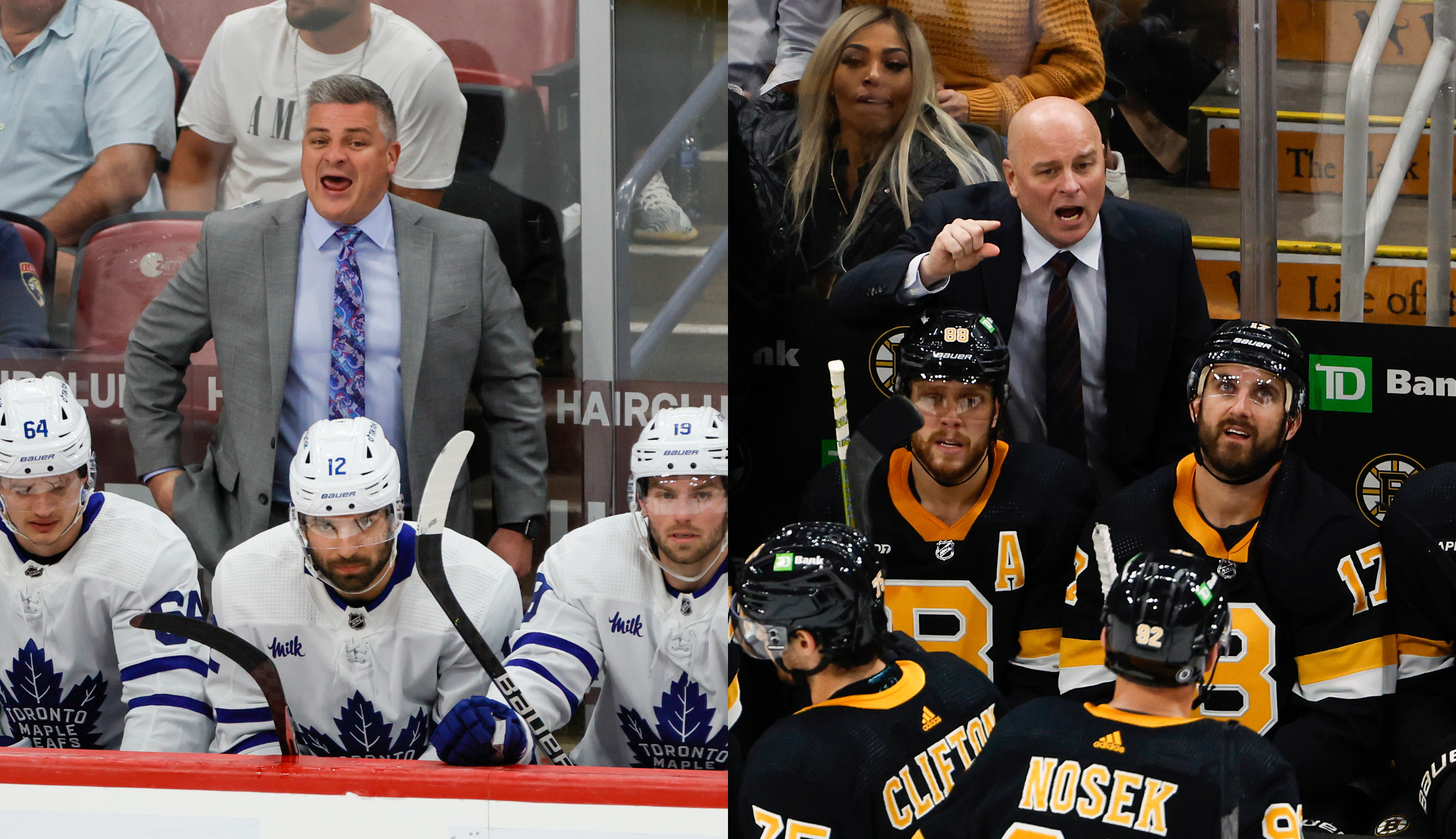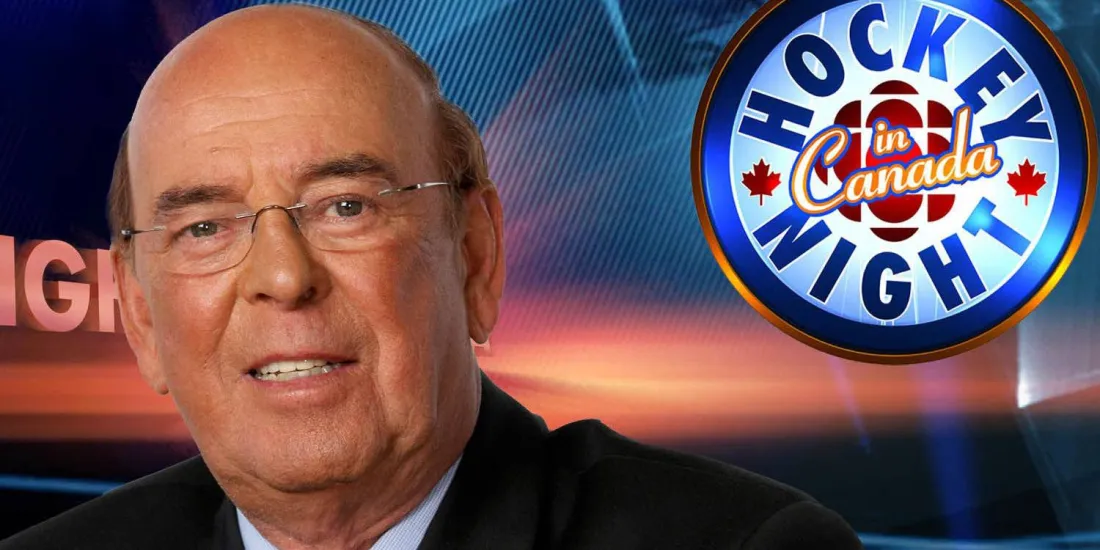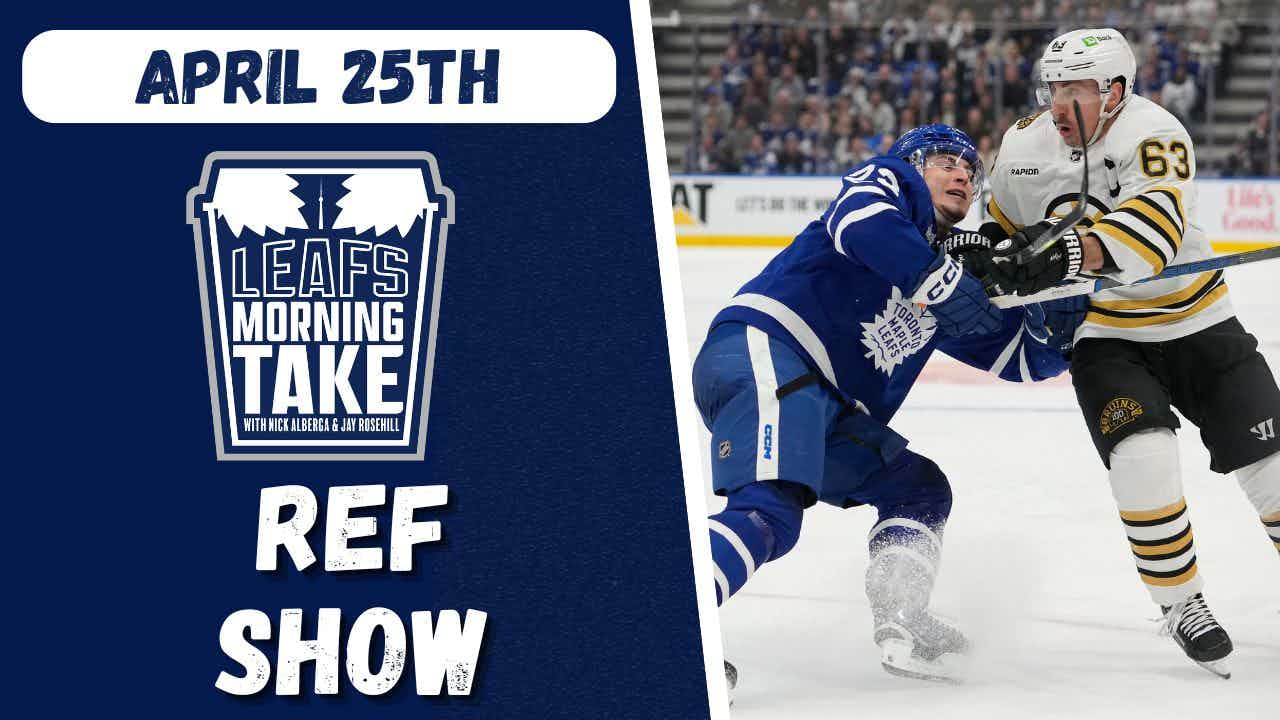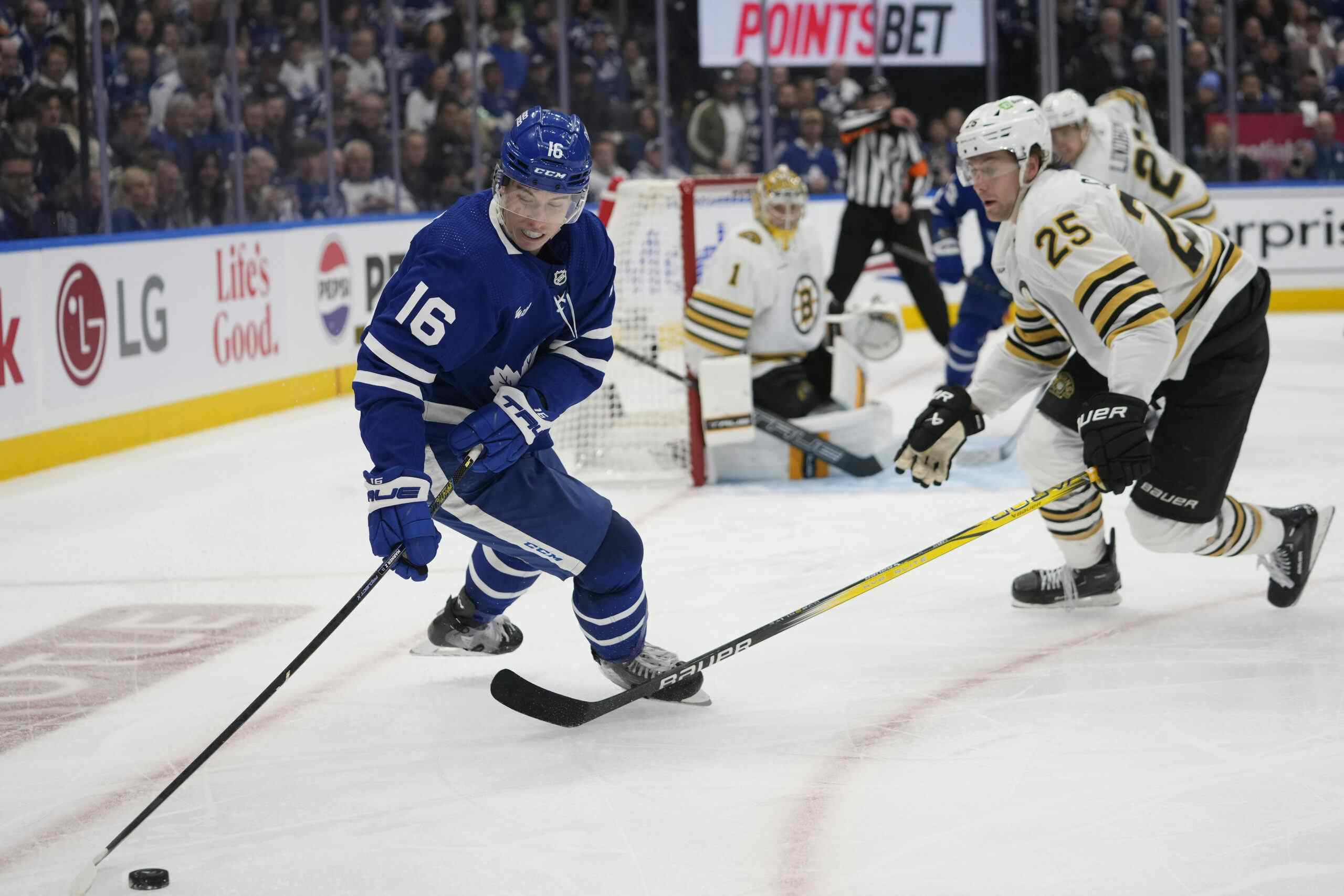NHL 20 predicts the rest of Mitch Marner’s career

Mitch Marner has had quite the rough start to the 2020 offseason when it comes to speculation regarding his future. There’s quite a lot of differing opinions circulating around, referring back to his contract negotiations, the subsequent season that followed, and what lies ahead for him in Toronto. In fact, two of my TLN colleagues have written pieces on the subject, which you can check out here and here.
While I could give you my take on Marner’s 2019-20 campaign, I decided to take a different approach. Rather than make some bold predictions that could one day end up on @OldTakesExposed, why not use a video game to give a rough idea of how the remainder of his career will turn out.
Inspired by my good friend Matthew Rodrigopulle, who wrote an excellent piece in a similar style on Nick Robertson, today I am going to simulate Marner’s career in NHL 20!
Before we begin, let me cover some ground rules that I will be following.
I am going to make sure I do not control the Leafs roster at all during this simulation in an effort to keep things fair. Prior to starting, I randomly picked a team (the Philadelphia Flyers) and will observe from afar how Mitch Marner and the Leafs are doing. This way, we can get an idea of what will transpire without any interference on my end. I also didn’t touch the Flyers roster at all as I have Auto-Sign on.
Injuries will remain on for this one in an attempt to make the simulation feel more realistic. As hockey is a physical sport, players are bound to get hurt and turning the option off would take away some of the realism. The downside to this is the real-time sim took much longer for me as I had to close off the annoying pop-ups announcing that a player would be missing time or was getting dealt.
It goes without saying that this simulation will only last as long as Marner is active in the NHL. Once the computer version of him announces he will hang up the skates, I am turning off my Xbox and going to bed. I will be giving brief descriptions of how each season goes, allude to the Leafs’ (or whichever team he ends up on) record, mention the Cup winner, and provide a five-year update breaking down his stats. Should he win an individual trophy, you best believe I will bring it up. And if there’s anything noteworthy regarding the team in terms of player movement, I got you covered.
It’s worth mentioning that I’m not the first person to simulate Marner’s career in NHL 20. That honour goes to ManOfTheRitt, who made a great video on it which you can check out here after you finish reading my piece.
Here’s a look at the forward lines heading into the first year of the sim with Marner in his usual spot as a first-line right-winger.

With all of that out of the way, let’s begin the simulation!
The simulation
Year 1 (2019-20)
We kick things off with a monstrous season from the Leafs as they cruise through the regular season. Not only do they win their division, but they finish two points shy of clinching a President’s Trophy. Near the trade deadline, they make a big splash by sending Jeremy Bracco and two other pieces to the San Jose Sharks in exchange for three players, with Joe Thornton being the centrepiece.
Marner himself had a fine season offensively as he posted 38 goals, 45 assists, and 83 points in 81 games played. He was second on the Leafs in scoring and finished 11th in the league in goals, so it’s safe to say Toronto is getting their money’s worth in year one.

The success from the regular season carried over into the playoffs where the Leafs did the unthinkable. Toronto cruised past the first round, exorcised their demons by defeating the Boston Bruins in round two, and carried that momentum all the way towards winning a Stanley Cup. When I saw the results pop-up for the first time, I was laughing hysterically over it happening and then cried for a bit while repeating the phrase, “Why didn’t this happen in real life?”
Marner played well during the Leafs’ playoff run as he posted 6 goals, 11 assists and 17 points to help his team win their first Cup since 1967. No individual trophy went his way, but I don’t think he minds one bit.

Year 2 (2020-21)
Entering the year as the reigning champions, the Leafs had a big target on their back and it resulted in the team slightly regressing during the regular season. The same goes for Marner as his offensive production took a hit, finishing the campaign with 26 goals, 45 assists, and 71 points (third on the team in scoring). In spite of all that, it was still good enough to clinch a playoff birth. They could not, however, recapture the championship as they were eliminated in seven games by the Ottawa Senators in the second round. The Philadelphia Flyers overcame blowing a 3-1 series lead to win the Stanley Cup. During the offseason, Zach Hyman bolted in free agency and signed with the Montreal Canadiens.
Year 3 (2021-22)
After a few minor tweaks to their roster (most notably with signing Ryan Reaves), the Leafs rebound by winning the Atlantic crown and finished fourth in the entire NHL. Mitch Marner, now at 92 overall, also saw improvements in his point production with 33 goals, 58 assists, and 91 points, good enough for the team lead and second in the league for scoring. Both he and the Leafs carried that momentum into the playoffs where they made it back to the Stanley Cup Finals but lost to Nazem Kadri and the Colorado Avalanche in seven. Marner played well in the postseason by posting 23 points in 25 games. He wouldn’t go home empty-handed as he won the Hart Trophy and the Ted Lindsay Award.
Year 4 (2022-23)
There was some good and bad news regarding the Leafs’ roster. Morgan Rielly could not come to terms on a new deal with Toronto and took his talents to the Columbus Blue Jackets. On the bright side, they managed to snag up Blake Coleman in free agency and brought back Patrick Marleau, who is now 43-years-old. Toronto responded by posting their best regular season so far, topping their division with ease and finishing second in the league with 115 points. Like the previous campaign, Marner played well by recording 26 goals, 64 assists, and 90 points, placing him second on both his team and the NHL for points. In the postseason, the Leafs went on a roll by going 8-1 through the first two rounds before being stymied by the Flyers in five games. Philadelphia then went on to lose the Finals in seven to the Nashville Predators. In 14 playoff games, Marner registered 16 points and tied for the team lead in that category.
Year 5 (2023-24)
Toronto made minimal adjustments to their roster in free agency, with Mark Pysyk being the most notable addition. The Leafs took a step back during the regular season as they finished third in the Atlantic and were a loss away from a wild card spot. Marner played all 82 games and led the Leafs in scoring by posting 82 points. By contrast, the postseason was far kinder to Toronto as they made it back to the Finals and defeated the Sharks in six games to win their second Cup of the simulation. Marner was the MVP of the run, scoring 29 points in 26 games to win his first Conn Smythe Trophy. With another cap crunch looming, the Leafs lost William Nylander to free agency.

Here’s a breakdown of Marner’s stats five years into the sim:

Year 6 (2024-25)
As we enter year six of the simulation, it’s hard not to notice how drastically the roster has evolved:



You might be thinking to yourself “Jeez, that roster doesn’t look too great. They’re probably not going to do much of note.” Well guess what, this team went on to win the President’s Trophy with 114 points on the year. I know, I’m shaking my head in disbelief too. One thing that does make sense is that Marner, who is currently in the final year of his contract, took care of business offensively by leading his team in scoring with 85 points. The impressive regular-season success did not translate into the playoffs as they were eliminated in the second round by the Florida Panthers, who went on to lose in the Finals to the Chicago Blackhawks. Marner led the way offensively with 19 points in 13 games.
Year 7 (2025-26)
During the offseason, Marner and the Leafs agreed on a seven-year, $73.99 million extension that pays him $10.57 million per campaign. Considering how far along we are in the simulation, I’d say that’s a pretty good deal for Toronto. To celebrate, the Leafs topped the Eastern Conference with another 114 point season. Marner once again led his team in scoring with 93 points in 82 games, only this time he finished fifth in the league in that department. That carried over into the playoffs where his 19 points got them to the third round, but it wouldn’t be enough since the Leafs were kicked aside in five games by the Carolina Hurricanes. The Predators would take home another Stanley Cup title.
Year 8 (2026-27)
During the past offseason, the Leafs said goodbye to John Tavares who signed with the Flyers. Toronto filled the gap by bringing in Dominik Kubalik. I hate to sound like a broken record, but the Leafs yet again had a solid campaign and won the Atlantic Division. They also acquired Jake DeBrusk near the trade deadline, making all jersey tuggers rejoice. Marner had his best season yet as he hit 103 points on the year to lead his team in scoring. He also was one point shy of Quinn Hughes, (!) who is now on the New York Rangers, for the league leader for offence.
The strong regular season did not proceed into the playoffs as Toronto was eliminated in the first round by the New York Islanders, with Marner posting just 5 points. Funny enough, the Leafs were the ultimate playoff loser as they lost to the team that lost to the team that lost to the team that lost to the team that won the Cup. In this case, it was Connor McDavid and the Oilers winning the title. Marner took home the Lady Byng trophy for his fourth individual award.
Year 9 (2027-28)
In a shocking twist, the Leafs won the draft lottery with a pick they received from the Bruins in the DeBrusk trade (I call it karma for the Kessel deal). They used it to select Teemu Heiskanen, a centre who could become the next face of the franchise. During free agency, Toronto signed an ageing Ryan Ellis as depth for the blueline. Stop me if you heard this one before, but Marner and the Leafs yet again did well during the regular season by topping their division and finishing fourth in the NHL. Toronto made it back to round three but lost in six to the Hurricanes, the eventual Cup winners. With 20 points in 19 postseason games, Marner was the Leafs scoring leader.
Year 10 (2028-29)
At some point during the offseason, the Leafs decided to bring back Connor Brown to provide scoring depth. Their four-year streak of winning the Atlantic came to an end as they dropped to third in their division. It was also Marner’s worst statistical season so far as he recorded just 65 points in 75 games played. Worst yet, the team was taken out in the first round by the Buffalo Sabres in seven games. Marner did step things up offensively by posting 10 points in the playoffs. Following this loss, Frederik Andersen decided to call it a career at age 39, leaving the Leafs in search of a new starter.
Here’s a look at Marner’s stats at the 10-year mark:

Year 11 (2029-30)
A decade has past and the makeup of Toronto’s lineup is nearly unrecognizable in comparison to the current iteration:





Marner, Matthews, Timothy Liljegren, and Kasperi Kapanen are the only four players that have remained on the roster since Day 1. But there are some things that have not changed, like the Leafs winning the Atlantic Division with 108 points or Marner leading Toronto in scoring at 95 points this time. It would all be for naught since the Leafs were eliminated in the first round yet again, this time to the Blue Jackets who had Nylander and Rielly on their roster. Despite only recording a single goal in the postseason, Marner would take home another Lady Byng Trophy. The Sabres went on to win their first Cup in franchise history.
Year 12 (2030-31)
Toronto said goodbye to Kapanen during the offseason, trading him to the New Jersey Devils for MacKenzie Blackwood to be their new starting goalie. It seemed to pay off in stride as the Leafs won their third President’s Trophy of the simulation. Marner exploded for 111 points on the year to lead both his team and the league in scoring. He went on to clean up the NHL Awards show by winning the Art Ross, Hart, Lady Byng, and Ted Lindsay Award. While they were able to make it out of the first round, they were eliminated in the second round by the reigning-champion Sabres in six games. Columbus would go on to win the Stanley Cup in a thrilling seven-game series.
Year 13 (2031-32)
Both Marner and Matthews were on the final year of their respective contracts, so the Leafs knew they had to make the most of it. They signed Braydon Osgood, a computer-made defenceman, to a four-year deal to strengthen their backend. Osgood’s presence must have inspired the team to win their second consecutive President’s Trophy and fourth overall. It was in no small part due to Marner’s play that season as he led the team in scoring with 96 points. Yet it was not enough to get the team far in the playoffs since they were knocked out in the second round by the Red Wings in seven, who went on to lose in the Finals to the Los Angeles Kings. Marner’s playoff performance was less than stellar, registering six points in 12 games.
Year 14 (2032-33)
Instead of testing the market, Marner chose to remain with his hometown team by agreeing to a two-year extension that earns him $10.275 million a season. They also re-signed Matthews and traded for A.J. Beukeboom as their new starter. The Leafs and winning the Atlantic appear to go together like a peanut butter and jelly sandwich because it transpired once again. Perhaps most surprising was that Marner became a lethal goal scorer by recording 43 tallies and 88 points. In the playoffs, they were able to overcome a 3-1 deficit in the third round to return to the Finals for the first time in nearly a decade. Toronto, however, could not capture their third Stanley Cup as the Minnesota Wild beat them in seven games. It was a much better showing for Marner in the postseason by putting up 20 points in 23 games.
Year 15 (2033-34)
The offseason was bittersweet as Matthews signed with the Hurricanes and Liljegren was picked up by the Vancouver Canucks. It leaves Marner as the sole player who has remained with the franchise since the beginning of the simulation. Toronto did make a big move in free agency, signing defenceman Stefan Lack to a seven-year deal. Marner’s 84 points played a role in the team winning, say it with me, another President’s Trophy! I am befuddled by how successful this team has been during the regular season every year up to this point. I don’t think the EA Gods will ever be this kind to me again.
This same run of good fortune continued in the playoffs, where the Leafs overcame a 3-1 deficit in the opening round to beat the Blue Jackets. It did not translate into an extended stay in the new season as they were curb stomped in five games by the Cup-winning Red Wings.
As we hit the 15-year mark, let’s reflect back on the previous five campaigns:

Year 16 (2034-35)
Marner decided to stick around for another season by agreeing to a one-year, $9.025 million contract. He has dropped down to 86 overall and it appears his time in the league is nearing its end.



You saw that correctly, Heiskanen is no longer on the Leafs as he was successfully offer-sheeted by the Hurricanes. Toronto did get a bunch of first-rounders in compensation but it is a huge blow to their lineup nonetheless. That’s because the Leafs missed out on the postseason for the first time in the simulation despite finishing just six points back of the Sabres for third in the Atlantic. Marner’s decline in play was noticeable in this season as he scored just 65 points on the year. As he and the Leafs watched the playoffs from home for the first time since 2016, Colorado would win the championship.
Year 17 (2035-36)
At the 2035 NHL Draft, the Leafs had the fourth and ninth overall selections which they used to select Zane Cunningham and Sascha Kretschmann respectively to help rebuild their forward core for the future. But it was also a solemn offseason for the franchise as Marner, now 38, was let go in free agency, where he signed with the Arizona Coyotes for a season at a $4.820 million AAV.

Moving to the desert did not spring forth an oasis, as the Coyotes did not come close to qualifying for the playoffs. Age finally caught up to Marner, who’s 37 points in 66 games played was by far the lowest of his career. While the Devils were celebrating their first Cup win in over three decades, Marner finally decided to call it a day and leave the game behind at 39-years-old.
With retirement awaiting the computer version of Marner, here are his career totals:

Takeaways
It goes without saying that this simulation could not have gone any better for Mitch Marner in terms of team success. The rules I set for myself at the beginning were followed and it still baffled me how well Toronto did for the majority of the sim. After watching the Toronto Maple Leafs win both the Atlantic and President’s Trophy for the millionth time in a row, I was struggling to find the words to recap the season without reusing the same sentences from earlier campaigns. But how can you blame me? Toronto sat atop their division in all but four seasons of the sim, which may seem ludicrous now given the fanbases grumblings about their team, but the EA simulation seems to view them highly.
Marner did extremely well in this simulation as he was, or close to, leading his team in scoring for the majority of the seasons. His trophy case got filled up throughout the years, especially following the 2030-31 campaign where he hit his personal best in points. Most importantly, he helped the team make four trips to the Stanley Cup Finals and won the title two times.
Could the Leafs have had more success in the postseason? For selfish reasons, I say yes. The team lost so many Game sevens and deserved a better fate, but that’s further proof that talent alone won’t result in winning multiple Cups with ease. Especially when you consider that only four teams won the Cup twice in the simulation, with one of them being the Leafs.
I guess what I’m trying to say is that if how the remainder of Marner’s career turns out is similar to what EA thinks it will be, then Toronto has no reason to worry about the Markham native. Or you can take all the information I have provided today and complain about how he hasn’t achieved this amount of success in real life.
Recent articles from Michael Mazzei





